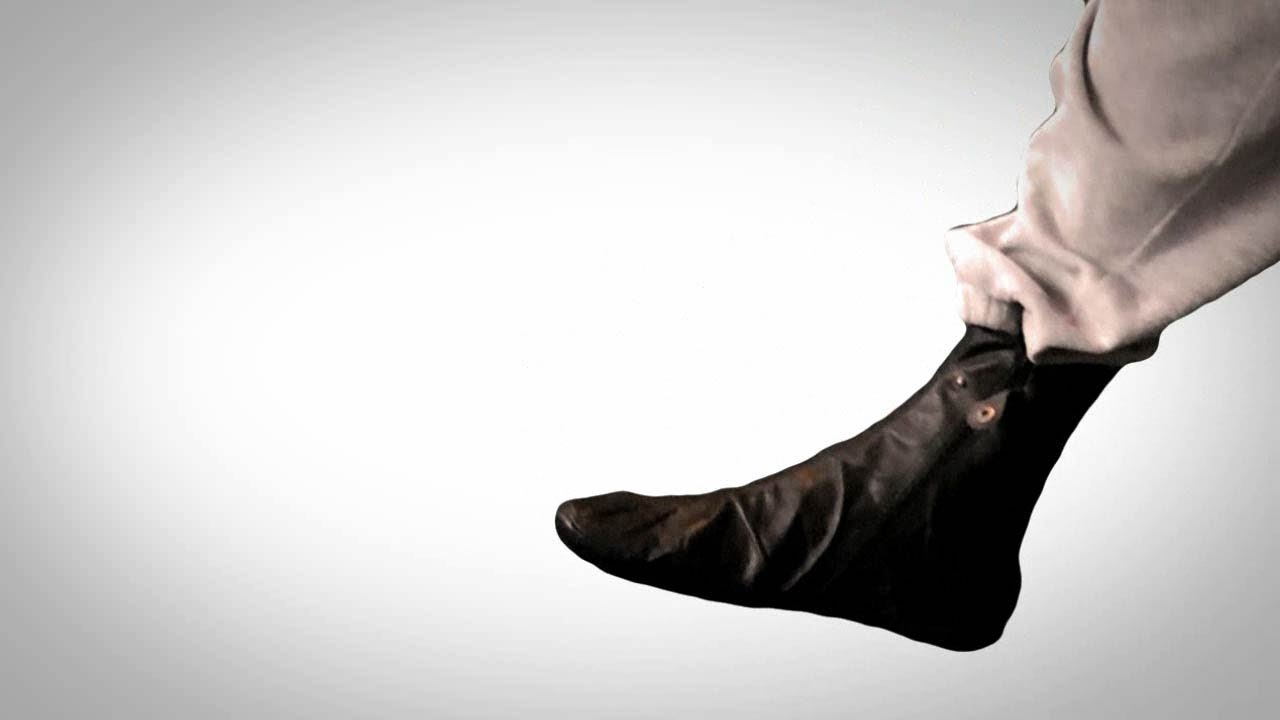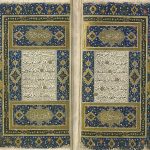By Shaykh Ridhwan Saleem
Translation from traditional Hanafi legal text, Maraqi al-Falah, of Imam Abul Ikhlas Hasan ibn `Ammar Shurunbulali of Egypt (d. 1069):
Section 22 – Wiping Footgear
Wiping footgear [1] has been established by the sunna, both orally and practically. Its cause is wearing the footgear. Its condition is that the footgear covers the obligatory area and is suitable for wiping with the time period remaining. Its rule is that it legitimises the prayer in the time period. Its integral is wiping the obligatory amount. Its characteristic is that it has been legislated as an allowance. Its manner is to begin at the toes with the fingers working linearly to the shins. It is permitted to wipe the footgear whilst purifying from minor ritual impurity because of the extensive number of narrations. Hence, unbelief is feared for the one who rejects it. However, if a person believes it is permitted and proceeds to remove them the reward is for the original because washing is more difficult.
If the traveler performs dry ablution whilst sexually impure and then nullifies ablution and sufficient water is found for the limbs of ablution the footgear must be removed and the feet washed. It is not valid to wipe the footgear for sexual impurity. Wiping footgear is valid for men and women because the texts make no exception, which therefore includes women. It is also valid whether on journey or resident and whether there is a need or not.
Wiping is valid even if the footgear is of a thick material other than leather such as felt, broadcloth or cotton that remains on the feet without having to be tied and without water penetrating. Such a material performs the same function as leather. This is the stance of them both and is the legal position. This is also the position that the Imam reverted to. The footgear can be socks that has leather bottoms – these are called jawrab mun’al – or the top and bottom being leather – these are called mujallad. Equally, they may have no leather at all, being thick.
Wiping footgear has seven conditions.
1. Wearing them after having washed the feet This is permitted even if the feet have been washed legally, such as a splint being wiped that was on one or both feet after which the footgear is worn. In this case, it is permitted to wipe the footgear because wiping the splint is treated the same as washing the feet. This is permitted even if the footgear was worn before ablution is completed as long as it is completed before being nullified because of the presence of the condition. Footgear merely prevents the flow of ritual impurity. It does not raise the ritual impurity. If the excused performs ablution and wears the footgear when the excuse has ceased the time period is the same as the non-excused. Otherwise, the excused is restricted by the time period and thus the footgear cannot be wiped after it.
2. The footgear covering to the ankles This applies to the sides. Hence, being able to see the ankles from the top of the footgear of a person with thin legs does not affect. Footgear that does not cover the ankles is permitted to wipe upon if a thick material, such as broadcloth, is sewed on to it.
3. Ability to walk in the footgear The allowance disappears because its condition, which is being able to walk, is no longer present. Hence, it is not permitted to wipe on footgear made from glass, wood or metal.
4. The footgear being free of any holes more than the size of three toes, each toe equivalent in size to the smallest toe The measurement is based on the smallest toe because toes are the area of walking. There is a difference of opinion as to whether the toes are considered as being closed or spaced. However, if toes appear out of the footgear the individual toes are considered. Therefore, if the large toe along with the next toe appears, even if the two equal the size of three toes, it does not harm, according to the most correct position. If a rip appears that extends lengthwise and is more than three toes in length however nothing of the foot appears on walking because of the strength of the footgear it does not prevent wiping. A hole less than three toes on one foot is not added to another hole on the other foot. The minimum hole that is included is one in which a needle can enter – anything less is not considered.
5. The footgear remaining without having to be tied This indicates that the footgear is thick because thin footgear is not suited to covering a distance.
6. The footgear preventing water reaching the body This means that they do not absorb water.
7. Amount of three small fingers remaining from the front of the foot on each foot This means that the obligatory area of wiping is present. If one foot is amputated above the ankle it is permitted to wipe the other foot. However, if less than the amount of three fingers remains below the ankle it is not wiped because it is obligatory to wash the remainder and it is not permitted to combine this with wiping of the healthy foot. If the front of the foot is not present it is not permitted to wipe the footgear even if the back of the foot is present because it is not the area that is wiped. However, it is obligatory that it be washed.
The resident wipes for a day and night and the traveller wipes for three days and nights. These time periods have been narrated from the Messenger of Allah, upon him be peace and blessings. The time period for both resident and traveller begins from the moment the ritual impurity appears after having worn the footgear in a state of purity, according to the correct position. This is the moment that the footgear prevents the ritual impurity from flowing to the foot and before this the purity of washing was present. It is said that the moment is upon wearing the footgear. It is also said that it is from the moment of wiping. If a resident wiped and then travelled before the time period is over the time period is completed as a traveller because the consideration is with the end of the time, as with prayer. If a traveller becomes resident after having wiped for a day and night the footgear is removed because the allowance of travelling no longer remains. However, if the traveller has wiped for less than a day and night the time period is completed as a day and night, being the time period of the resident.
The obligatory wiping is the equivalent size of three small fingers (2), according to the most correct position. The fingers are the tool by which wiping is performed as has come in the sunna, and three is the majority. If the amount is wetted, even if it be with a rag or by pouring, it is permitted. The place of wiping is the surface of each foot once. Hence, it is not valid to wipe on the bottom, heel and sides of the foot or on the shin. It is not sunna to repeat the wiping. The sunna of wiping is to pass spaced out fingers beginning from the tips of the toes to the shin. The Messenger of Allah, upon him be peace and blessings, passed by a man performing ablution who was washing his footgear. He nudged him with his hand and said, “We have only been ordered to wipe as such.” He then showed him from the front of the footgear to the bottom of the shin once and he spaced out his fingers. Thus, if a person begins from the shin or wipes across the foot it is valid but contradicts the sunna.
The nullifying agents of wiping are four.
1. Everything that nullifies ablution This nullifies because wiping is a replacement. Therefore, the nullifying agents of the original nullify the wiping.
2. Removing most of the footgear This nullifies because, on removing the footgear, the ritual impurity flows to the foot – in reality, this is the nullifying agent. Thus, mentioning removal as being the nullifying agent is figurative. Once one footgear has been removed the other must be removed because the ritual impurity has flown to the foot and the both feet are obligatory to wash. The wiping is nullified even if the removal takes place by most of the foot coming out, according to the correct position, because the area of wiping has separated from its place and the majority has the rule of the whole.
3. Water touching most of one foot This is according to the correct position and is the same as the whole foot being wet. It is then compulsory to remove the footgear and wash both feet so as to avoid combining between washing and wiping. If a person washed both feet without removing the footgear it suffices for the washing. Hence, its purity does not become invalid by the time period passing.
4. Time period passing for resident and traveler Mentioning passing of the time period as being the nullifying agent is figurative. The nullifying agent, in reality, is the previous ritual impurity that only now has appeared. Hence, if the time period completes whilst in prayer the prayer is invalid. In the absence of water dry ablution is performed. If there is a fear that due to cold the person’s foot or part of will be damaged it is permitted to wipe until the fear passes. The apparent statement of the texts is that the attribute of wiping remains. However, M’iraj Diraya states that the whole footgear is wiped, as with splints. With the last three, i.e. removal of footgear, wetting most of the foot and passing of time period, only the feet need to be washed. If the person was in ablution, it is not necessary to repeat the rest of the ablution because the previous ritual impurity would have affected the feet. It is not valid to wipe on a turban, hat, veil or a pair of gloves because wiping footgear has been established in contradiction to analogical deduction and hence nothing else can be added to it.
——————————————————–
[1] Footgear, or khuff, is a covering to the ankles. The word is derived from khiffa, or lightness, because the rule has been lightened from washing to wiping. [2] The word finger in Arabic is both masculine and feminine



